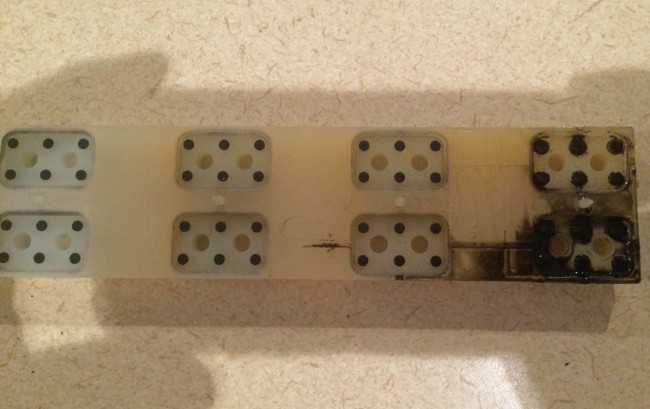Apparently, this coaxial cable has a hot spot:

The back story:
I received a text this morning that one of our client’s stations “had a lot of static on it, it might be off the air.” Upon arrival, I found the Nautel VS2.5 transmitter with 0 watts of forward power and an output network fault. Reset the transmitter and the forward power and reflected power increased together, triggering another output network fault. I was able to turn the transmitter power down to 100 watts, at which point it stayed on, with 50 watts reflected power. I also noted the dehydrator running continuously and 0 PSI line pressure.
Crap.
I wandered around the back of the building where the coax goes out to the tower and discovered the dripping plastic from the melted jacket. I reached up and first checked the cable to see if it was warm (it was not). Then I shook it and heard what I thought was water sloshing around inside. This is the original Andrew 7/8 inch cable from when the station signed on in 1972 or so. Very likely that further up the tower, something has chaffed through the outer jacket and shield, allowing water into the cable.
I drilled a small 5/32-inch hole at the lowest point in the cable before it enters the building. The result was a steady stream of water, which was aided by some additional pressure from a spare N2 tank. I let it drain while I ran down to town and got some lunch. I came back half an hour later, turned the transmitter on, and was satisfied to see 100 watts of forward power with 1 watt reflected. I ran the transmitter up to full power for a while, then deciding discretion is the better part of valor, and turned it down to half power; 820 watts which net 8 watts reflected power.
Needless to say, the transmission line needs to be replaced as soon as possible.










